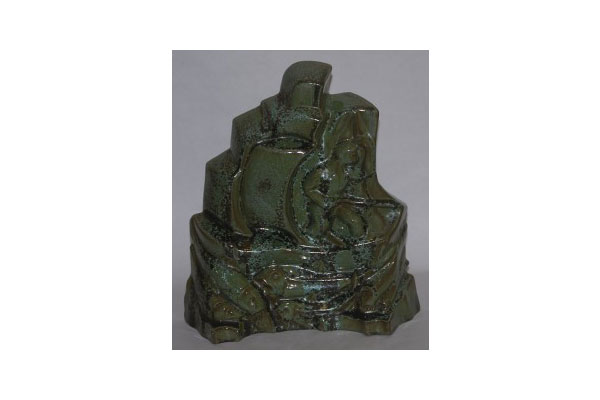Even though Fulper Pottery was incorporated in 1899, it had roots that went as far back as 1814, albeit under a different name. The Flemington, New Jersey company was first the brainchild of Samuel Hill. He too called New Jersey home and was a well respected producer of crocks, jars and drain pipes. Hill passed away in 1858 and before long, Abram Fulper decided to begin purchasing as many of Hill Pottery pieces that he could get his hands on.
 Fast forward to 1899 when the company was incorporated. William Hill Fulper II, Abram’s grandson, transitioned into the role of secretary and treasurer of the company. His Princeton University education served him well, especially as the company continued to grow. It wasn’t until 1909 that the now-Fulper Pottery Company released its first line, known as Vasecraft. It was more of a minimalist line; quite casual, yet lovely.
Fast forward to 1899 when the company was incorporated. William Hill Fulper II, Abram’s grandson, transitioned into the role of secretary and treasurer of the company. His Princeton University education served him well, especially as the company continued to grow. It wasn’t until 1909 that the now-Fulper Pottery Company released its first line, known as Vasecraft. It was more of a minimalist line; quite casual, yet lovely.
Within a year of Vasecraft’s release, another prominent employee, Martin Stangl, found himself in the role of ceramics engineer and soon was developing many of the glazes Fulper Pottery is so well known for. Another prominent name associated with this art pottery company is John Kunsman. He too preferred the simple glaze colors. His work found its way to the Louisiana Purchase Exposition where it earned an honorable mention. There were approximately 100 glazes used during the course of the company’s production. It wasn’t until 1929 that Stangl bought out the Fulper family, and unfortunately, he opted to compromise both quantity and quality. Within five years, the company was producing most dinnerware.
What we’re left with is some of the most striking art pottery to be found anywhere. If you’re already a collector, you know the glazes are often what sets this line apart from all others and if you’re new to the Fulper Pottery collections, you’re in for a treat as you explore those many glaze lines.
Be sure to explore the Just Art Pottery Fulper Pottery page. We have several pieces available, including the Fishing Man Statue, which is a favorite among collectors.


